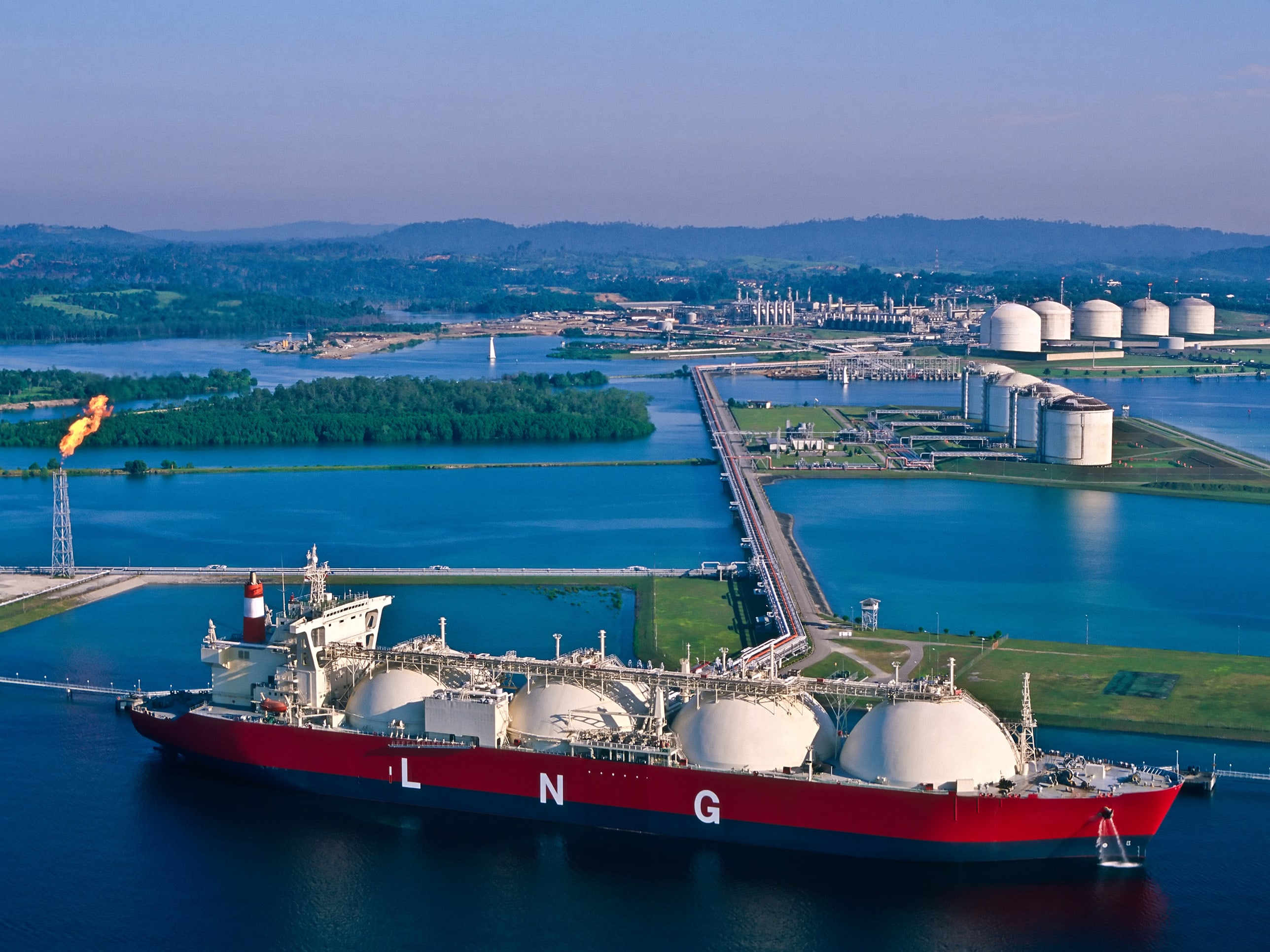Liquefied Natural Gas in the oil & gas industry
Transportation of natural gas in transmission pipelines
- Instrumentation and measurement solutions for LNG and natural gas
- Process instrumentation for liquefaction and regasification
- Custody transfer of cryogenic LNG and natural gas

Natural gas is normally transported over long distances in high pressure transmission pipelines. Where this is not possible for political, technical or economic reasons, the gas has to be transported by ship. To maximize the transport capacity, natural gas is cooled down to approximately -162°C, at which temperature methane, the main constituent, condenses to a liquid (at atmospheric pressure). As a liquid, the occupied volume is reduced 600 times compared to its gaseous volume at normal atmospheric conditions. Some LNG vapourizes during transport, and this is often used as a fuel for the ship: so accurate custody transfer flowmeters are used on all loading and unloading operations.
The main component of LNG is methane, but there are small percentages of some heavier components as well. This means that LNG from different regions or sources will have slightly different densities and calorific values. Usually the heavier components – some of which are useful and valuable - are removed and collected during the LNG purification processes. In this way the LNG when sold as a gas into the public distribution system meets the standards required.
The increased availability of LNG has led to the development of small scale LNG supply systems, where the very clean fuel is used to power trucks and ships. Again these need accurate metering systems, to provide an account of the quantity delivered for invoicing. This brings LNG (methane) into competition with other fuel supplies such as liquid petroleum gas (LPG - mainly pentane and butane). LPG is a liquid under atmospheric conditions and 8 bar pressure, and is sometimes confused with LNG. Another alternative fuel system uses compressed natural gas (CNG), which is gaseous methane, and has to be supplied at a high pressure - normally 250 bar.
KROHNE has a long track record in LNG and natural gas, with cryogenic measurement instrumentation and custody transfer flow measurement. This dates from early 1990, when KROHNE cryogenic flowmeters were installed for liquefied gas measurement at the Osaka LNG regasification plant in Japan.
Processes related to Liquefied Natural Gas
Explore the detailed industry processes and our recommended products, solutions and services:
Applications related to Liquefied Natural Gas
KROHNE Global Industry Division Oil & Gas
Headquartered in Duisburg, Germany, our Global Industry Division Oil & Gas is dedicated to serving customers in the up-, mid- and downstream oil & gas industry. Our offering extends from elementary process instrumentation up to fully engineered metering systems, and from engineering consultancy during the design phase, through to on-site commissioning and training. With presence in around 100 countries, local support is usually available from just around the corner. This applies whether the application can be covered by standard instrumentation, or is more challenging, where a one-off solution with dedicated process diagnostics is required.
KROHNE Oil & Gas
Ludwig-Krohne-Str. 5
47058 Duisburg
Germany
Email: oilandgas@krohne.com
